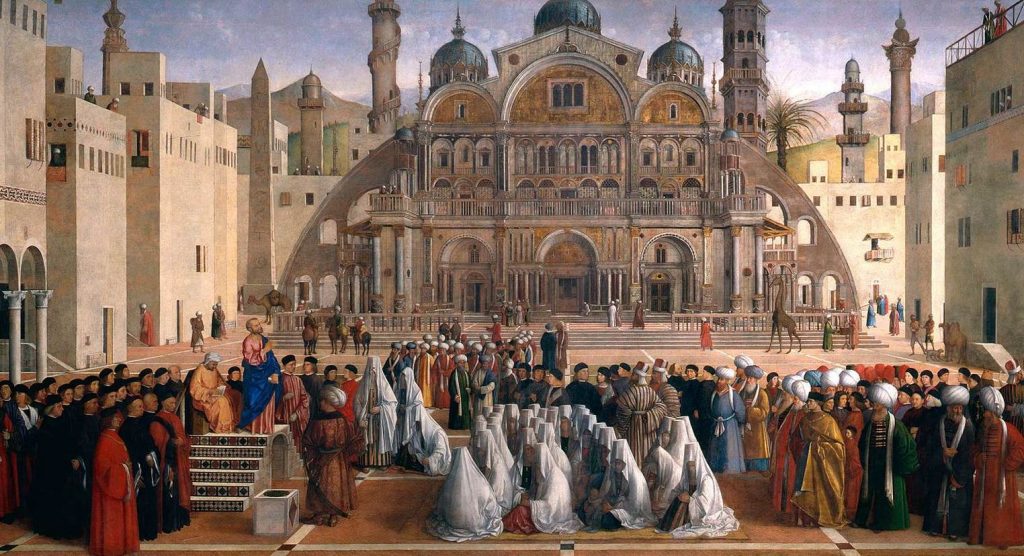One of the most amazing buildings in Milan is home to the city’s most famous museum, the Pinacoteca di Brera.
The Palazzo di Brera, which houses both the museum and the Brera Academy, was constructed on the site of a 12th-century monastery and former Jesuit college. This is just north of the historical heart of the city that was built around the magnificent Milan Cathedral.
The palace took its current form in the 17th century except for the amazing courtyard and monumental entrance which were completed during Habsburg rule in the late 18th century.
Formed as the Brera Academy in 1776, the collection of paintings at the Pinacoteca di Brera gradually grew over the centuries. It’s now one of the most popular museums in Europe, so let’s check out some of its highlights.
1. The Marriage of the Virgin – Raphael
- Date created: 1504
- Dimensions: 174 × 121 centimeters (69 × 48 inches)
The Marriage of the Virgin is also known as “Lo Sposalizio” and is one of the most famous paintings by famous Renaissance artist Raffaello Sanzio da Urbino (1483-1520), better known as simply “Raphael.”
The painting was commissioned to decorate the San Francesco Città di Castello church in the Italian city of Perugia and clearly emphasizes the mastery of the young artist. It was painted shortly before Raphael settled in Rome to work for Pope Julius II.
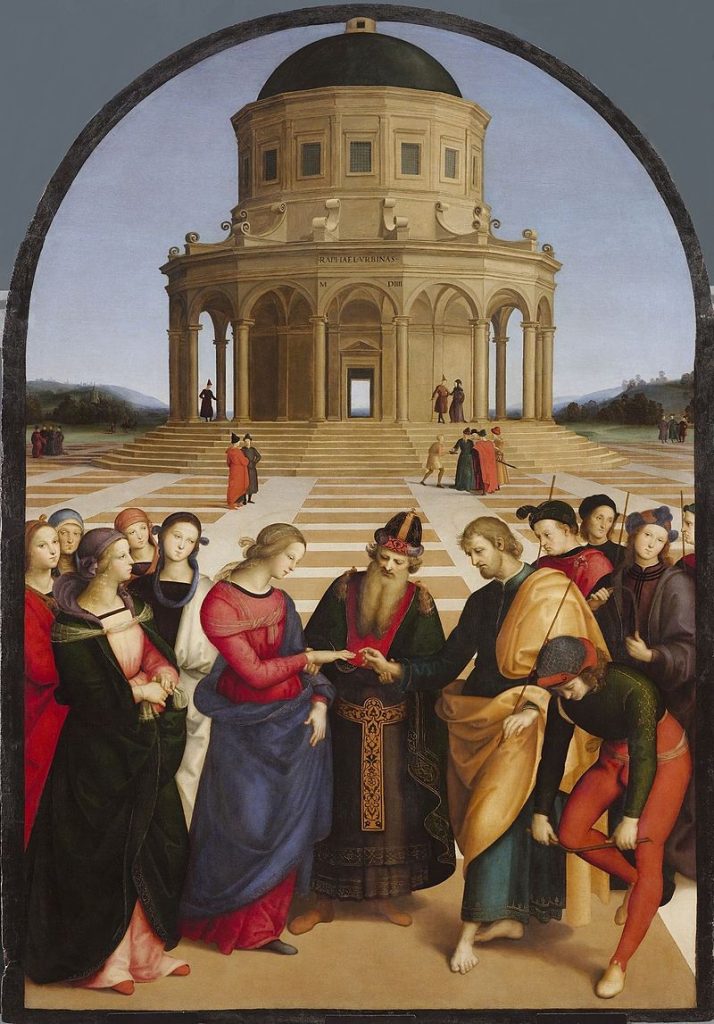
2. The Feast in the House of Simon – Paolo Veronese
- Date created: 1570
- Dimensions: 275 × 710 centimeters (108 × 280 inches)
The Feast in the House of Simon the Pharisee is one of the monumental banquet scenes that became the trademark of Paolo Veronese (1528-1588), a Mannerist artist who produced numerous monumental paintings for institutions in Venice.
Just like his other banquet scenes, it was commissioned to hang on the refectory wall of a monastery in Venice. This one initially hung at the Hieronymite monastery of San Sebastiano in the city and is now one of the most famous paintings at the Pinacoteca di Brera.
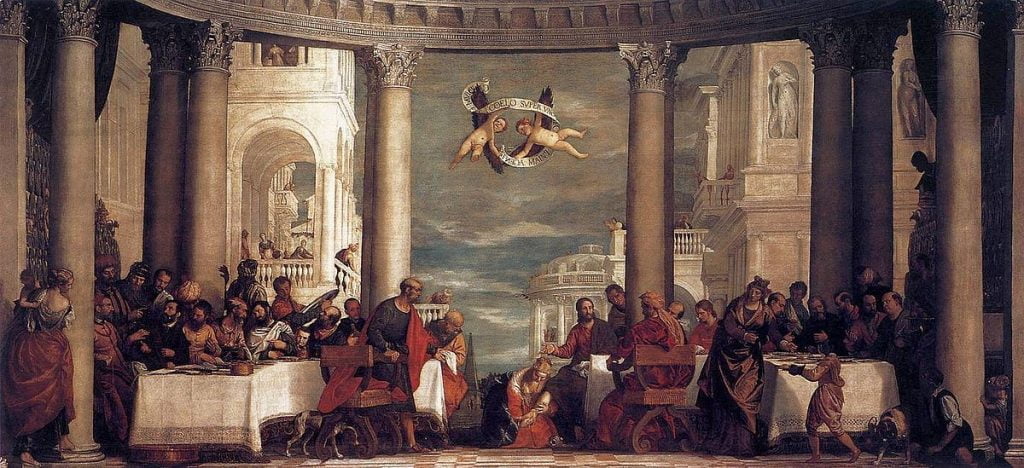
3. Supper at Emmaus – Caravaggio
- Date created: 1606
- Dimensions: 141 × 175 centimeters (56 × 69 inches)
Supper at Emmaus is one of the masterpieces of the Baroque master Michelangelo Merisi da Caravaggio (1571-1610), better known as simply Caravaggio. The painting at the Pinacoteca di Brera is the second version as the original can be found at the National Gallery in London.
The painting in Milan was probably produced while the artist was hiding in Naples after murdering a man in Rome. The shadows are darker and the gestures are more natural in this work. He also appeared to have included a woman after he already finished the main composition.
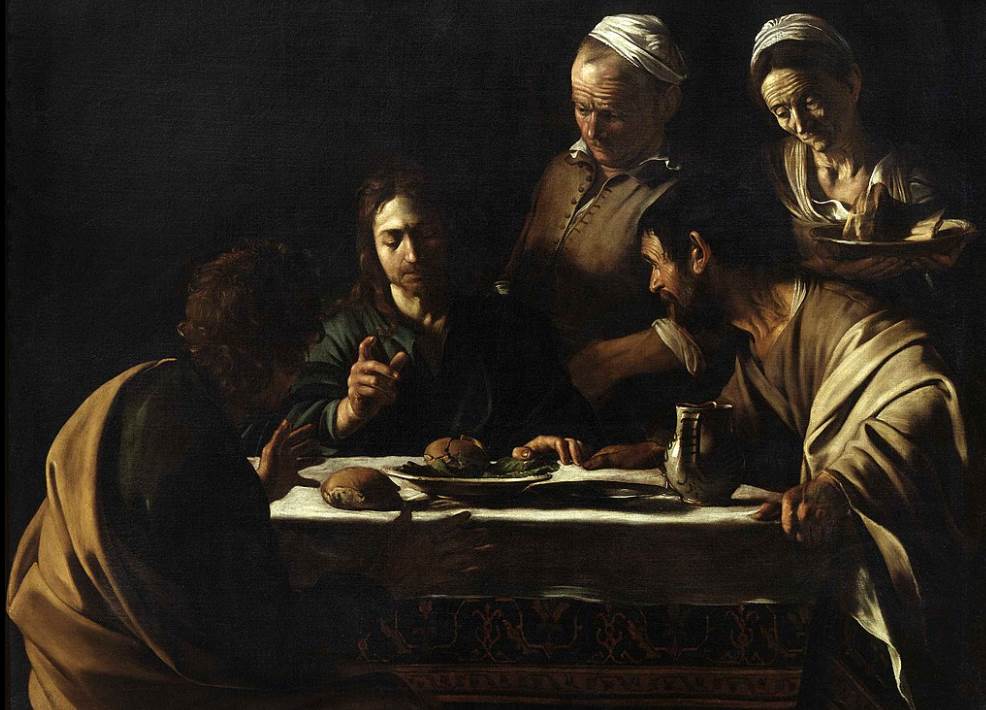
4. Last Supper – Peter Paul Rubens
- Date created: 1630-1631
- Dimensions: 304 × 250 centimeters (120 × 98 inches)
Last Supper is an amazing painting by the Flemish artist of the Baroque era Peter Paul Rubens (1577-1640). It was commissioned by a local woman named Catherine Lescuyer and it was part of a large altarpiece for the great Church of St. Rombout in Mechelen, modern-day Belgium.
Rubens was both a painter and diplomat and had spent nearly a decade in Italy. He even made an etching based on The Last Supper painting by Leonardo da Vinci which he saw at Santa Maria delle Grazie in Milan. This means it’s a typical Last Supper scene with Jesus in the middle blessing the bread.
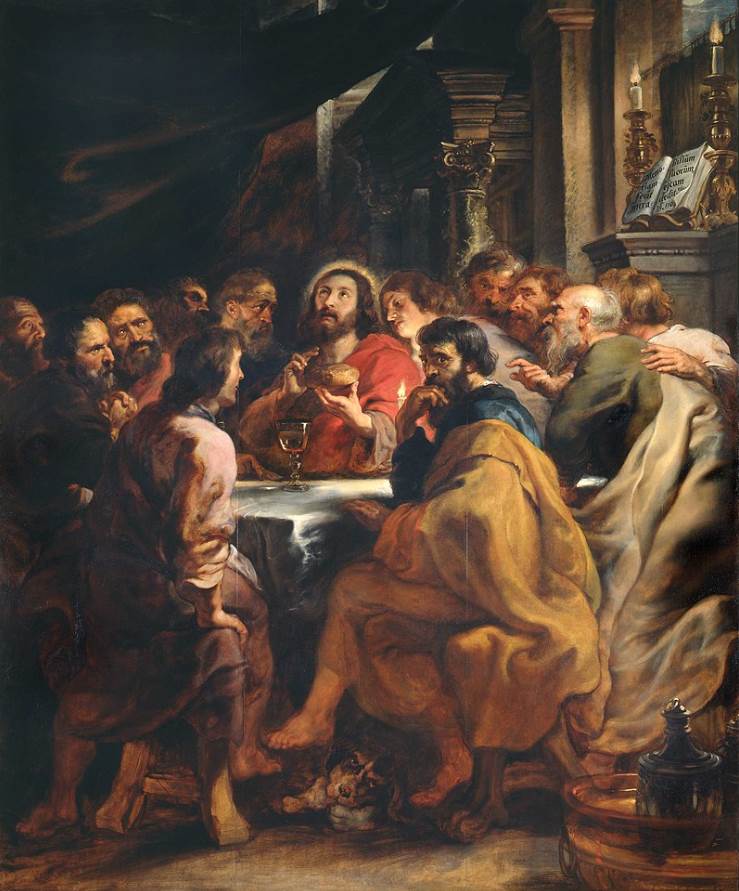
5. San Luca Altarpiece – Andrea Mantegna
- Date created: 1453-1454
- Dimensions: 177 × 230 centimeters (70 × 91 inches)
The San Luca Altarpiece is a polyptych panel painting produced during the 1450s by the Italian artist of the Renaissance Andrea Mantegna (1431-1506). It consists of 12 figures who were placed within their own arched panel.
The central figure on top represents Jesus Christ who was remarkably placed within the smallest panel. He is flanked by 3 figures on both sides, while Saint Luke in the bottom row is flanked by 2 figures. The painting was commissioned for the monastery of Santa Giustina in Padua, a city in the Veneto region in northern Italy.
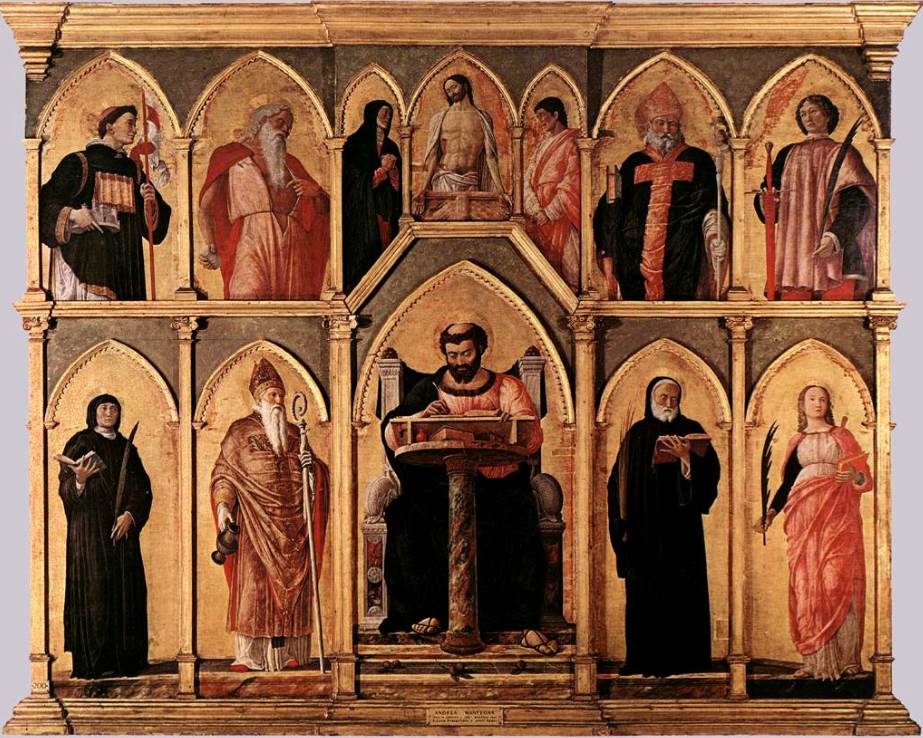
6. Finding of the body of Saint Mark
- Date created: 1562-1566
- Dimensions: 405 × 405 centimeters (159 × 159 inches)
The Finding of the body of Saint Mark is one of the multiple great paintings related to the life of Saint Mark produced by Jacopo Robusti (1518-1594), a Venetial painter better known by the nickname he received as a child, Tintoretto.
Saint Mark is the patron saint of the city of Venice and this painting depicts the people of the city gathering the body of the saint. It’s an accompanying painting for “Saint Mark’s Body Brought to Venice,” a painting that is on display at the Gallerie dell’Accademia in Venice.
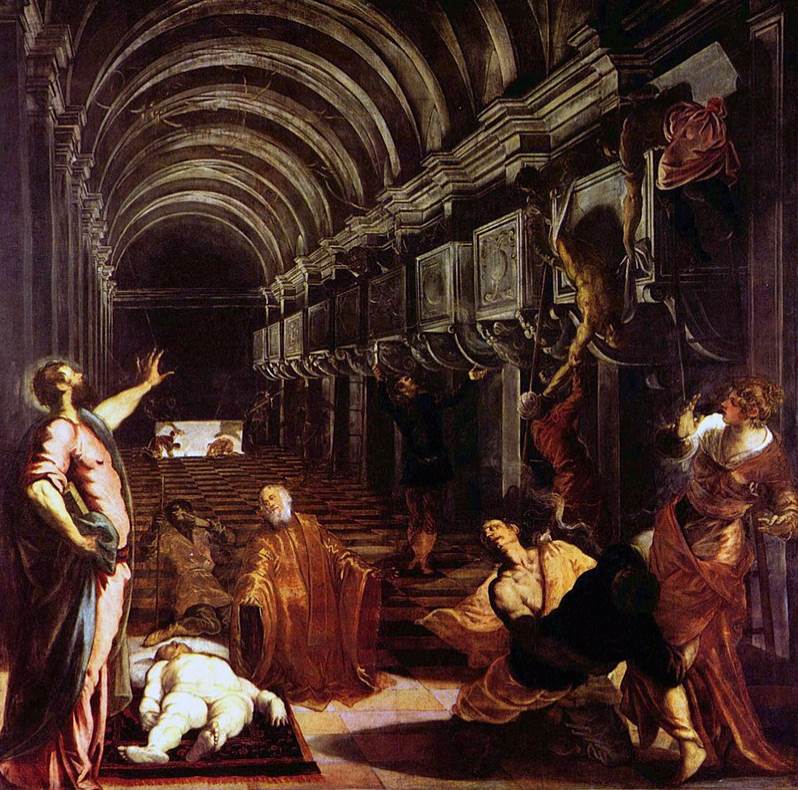
7. Christ at the Column – Donato Bramante
- Date created: 1490
- Dimensions: 93.7 × 62.5 centimeters (36.9 × 24.6 inches)
Christ at the Column is a painting that emphasizes the versatility of a man who designed some of the most famous Renaissance buildings ever built, Donato Bramante (1444-1514). He is the man who designed the Tempietto and who was the initial architect of St. Peter’s Basilica, to name just a few of his influential works.
The painting depicts Jesus Christ as he is tied to an elaborately decorated column before being tortured. It’s a close-up view that contrasts the distant landscape that we can see through the window. This strengthens the emotional quality of this remarkable painting at the Pinacoteca di Brera.
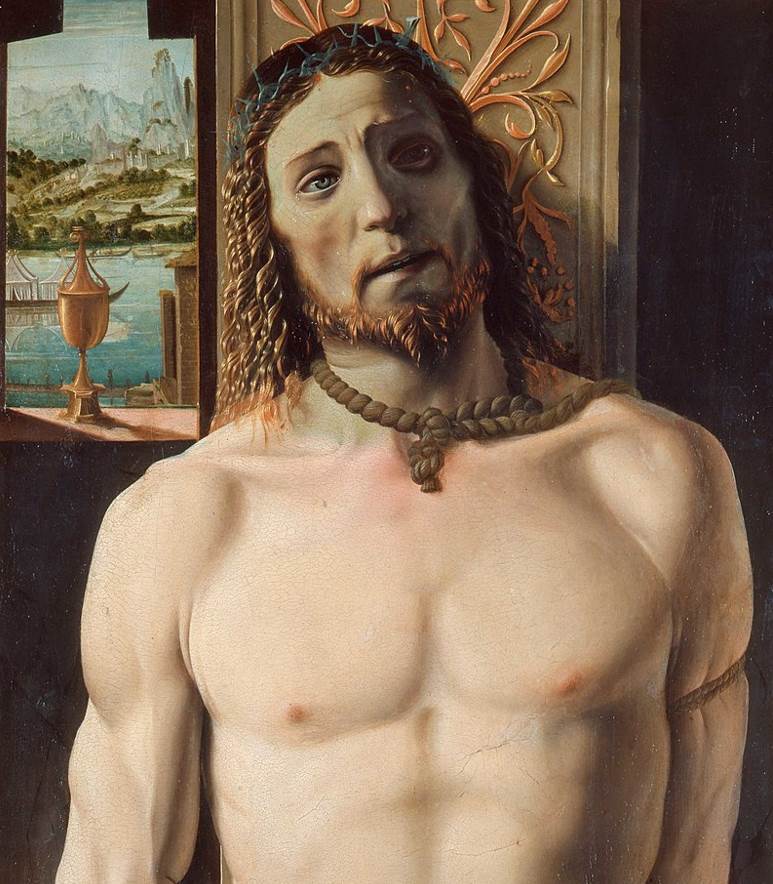
8. Christ and the Samaritan Woman – Annibale Carracci
- Date created: 1593-1594
- Dimensions: 170 x 225 centimeters (66.92 x 88.58 inches)
Christ and the Samaritan Woman was painted by Annibale Carracci, one of the pioneers of a particular Baroque style that would influence countless artists of future generations. This is greatly exemplified in this remarkable work of art that was painted in the late 16th century.
Carracci and his cousin and brother painted a series of works to decorate the Palazzo Sampieri Talon in Bologna, the home city of the artists. The other two works in this series, Christ and the Canaanite Woman by Ludovico Carracci and Christ and the Woman Taken in Adultery by Agostino Carracci are also famous paintings at the Pinacoteca di Brera today.
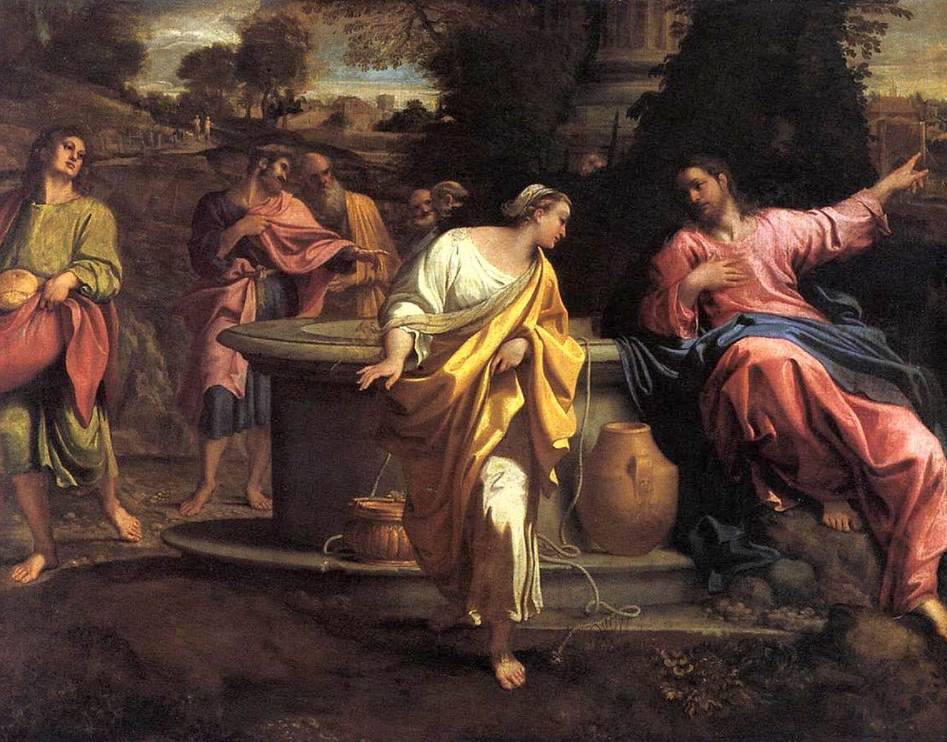
9. The Kiss – Francesco Hayez
- Date created: 1859
- Dimensions: 110 × 88 centimeters (43 × 35 inches)
The Kiss is one of the most famous paintings of the leading Romantic artist in Italy in the 19th century, Francesco Hayez (1791-1882). Although he also produced numerous famous historical and allegorical paintings, this is arguably one of his best-known works.
The painting, which depicts a medieval couple kissing, was commissioned by Count Alfonso Maria Visconti of Saliceto and hung at the opulent residence of the Visconti family for 25 years. He eventually donated it to the most popular museum in Milan in 1886, a year before he passed away.
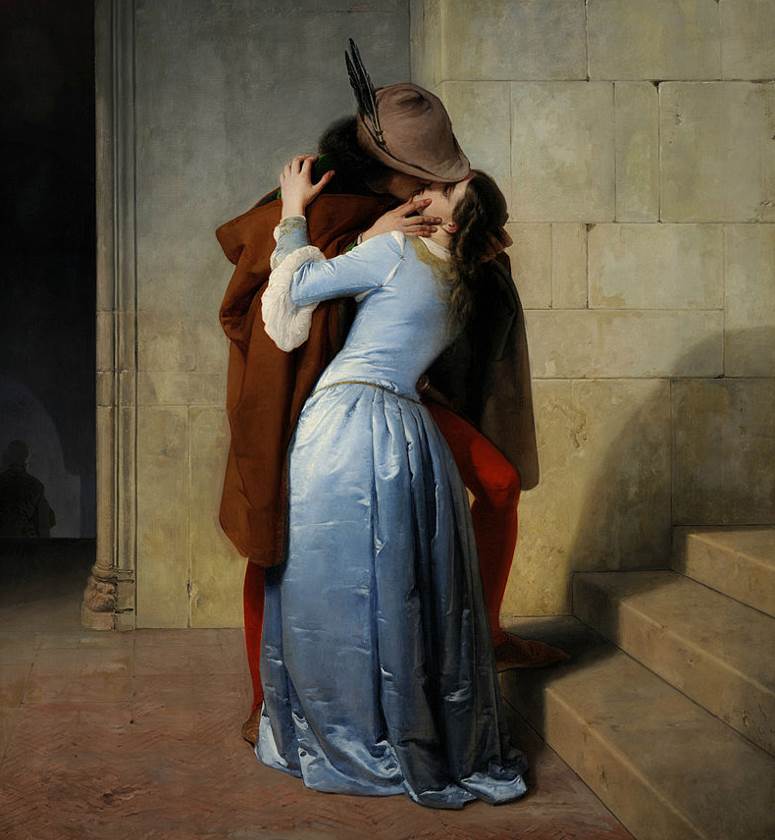
10. St. Mark Preaching in Alexandria – Gentile and Giovanni Bellini
- Date created: 1504-1507
- Dimensions: 347 × 770 centimeters (137 × 303 inches)
St. Mark Preaching in Alexandria is another monumental work of art at the Pinacoteca di Brera. It was painted in the early 16th century by the two brothers Gentile and Giovanni Bellini, Venetian painters of the artistic Bellini family.
The painting was commissioned to decorate the Scuola Grande di San Marco in Venice. It features a lot of exotic elements which were inspired by Gentile’s trip to Constantinople between 1479 and 1480. It depicts Saint Mark, the patron saint of Venice, who presumably lived in Alexandria in the 1st century A.D.
